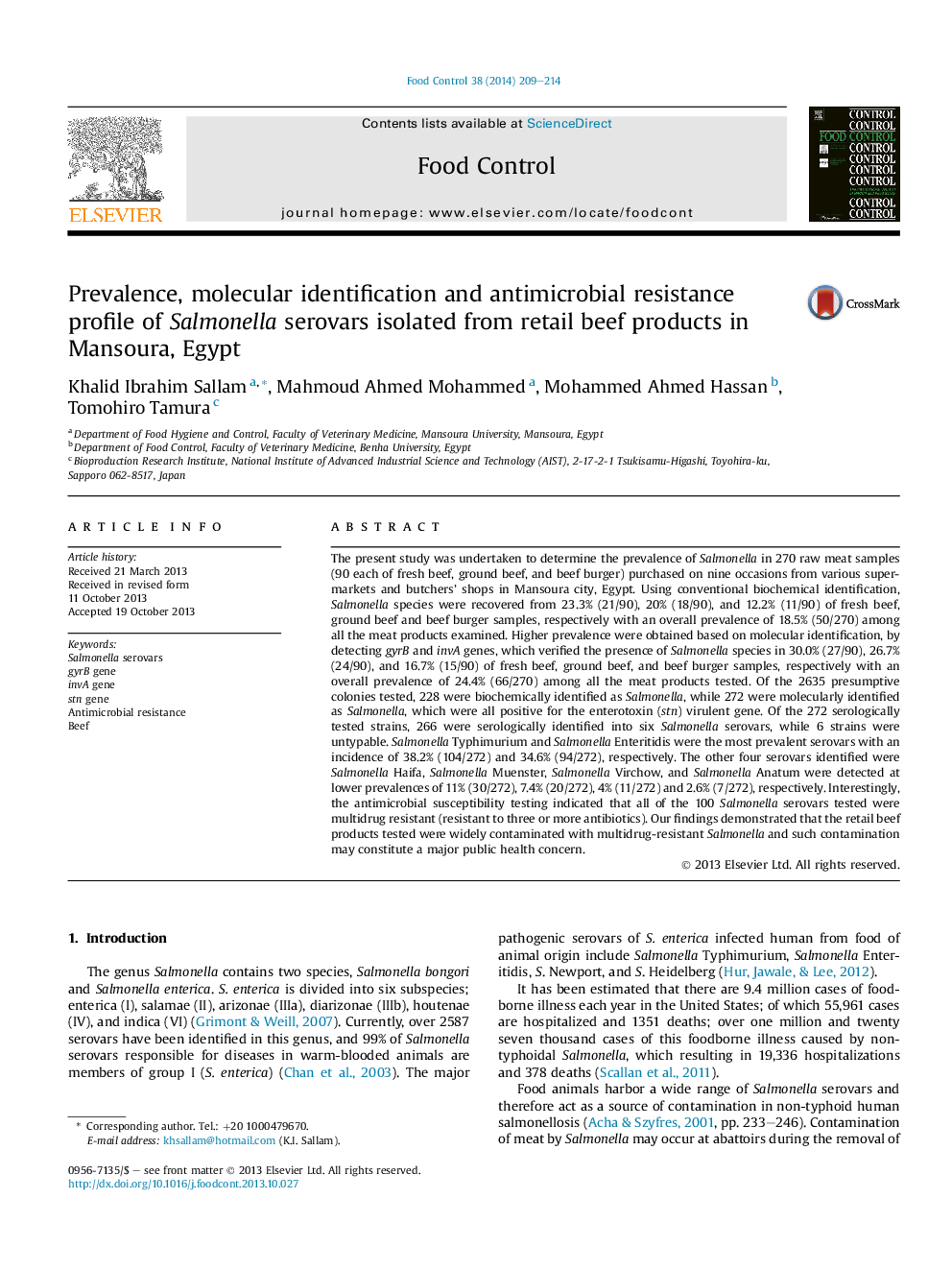| Article ID | Journal | Published Year | Pages | File Type |
|---|---|---|---|---|
| 6392079 | Food Control | 2014 | 6 Pages |
â¢Salmonella contamination is widespread in retail beef from Mansoura, Egypt.â¢Salmonella Typhimurium and Salmonella Enteritidis were the dominant serotypes of identified strains.â¢Isolates were verified by PCR through detection and sequencing of gyrB and invA genes.â¢Enterotoxin (stn) gene is present in all Salmonella isolates from beef products.â¢All of Salmonella isolates tested were multidrug resistant.
The present study was undertaken to determine the prevalence of Salmonella in 270 raw meat samples (90 each of fresh beef, ground beef, and beef burger) purchased on nine occasions from various supermarkets and butchers' shops in Mansoura city, Egypt. Using conventional biochemical identification, Salmonella species were recovered from 23.3% (21/90), 20% (18/90), and 12.2% (11/90) of fresh beef, ground beef and beef burger samples, respectively with an overall prevalence of 18.5% (50/270) among all the meat products examined. Higher prevalence were obtained based on molecular identification, by detecting gyrB and invA genes, which verified the presence of Salmonella species in 30.0% (27/90), 26.7% (24/90), and 16.7% (15/90) of fresh beef, ground beef, and beef burger samples, respectively with an overall prevalence of 24.4% (66/270) among all the meat products tested. Of the 2635 presumptive colonies tested, 228 were biochemically identified as Salmonella, while 272 were molecularly identified as Salmonella, which were all positive for the enterotoxin (stn) virulent gene. Of the 272 serologically tested strains, 266 were serologically identified into six Salmonella serovars, while 6 strains were untypable. Salmonella Typhimurium and Salmonella Enteritidis were the most prevalent serovars with an incidence of 38.2% (104/272) and 34.6% (94/272), respectively. The other four serovars identified were Salmonella Haifa, Salmonella Muenster, Salmonella Virchow, and Salmonella Anatum were detected at lower prevalences of 11% (30/272), 7.4% (20/272), 4% (11/272) and 2.6% (7/272), respectively. Interestingly, the antimicrobial susceptibility testing indicated that all of the 100 Salmonella serovars tested were multidrug resistant (resistant to three or more antibiotics). Our findings demonstrated that the retail beef products tested were widely contaminated with multidrug-resistant Salmonella and such contamination may constitute a major public health concern.
